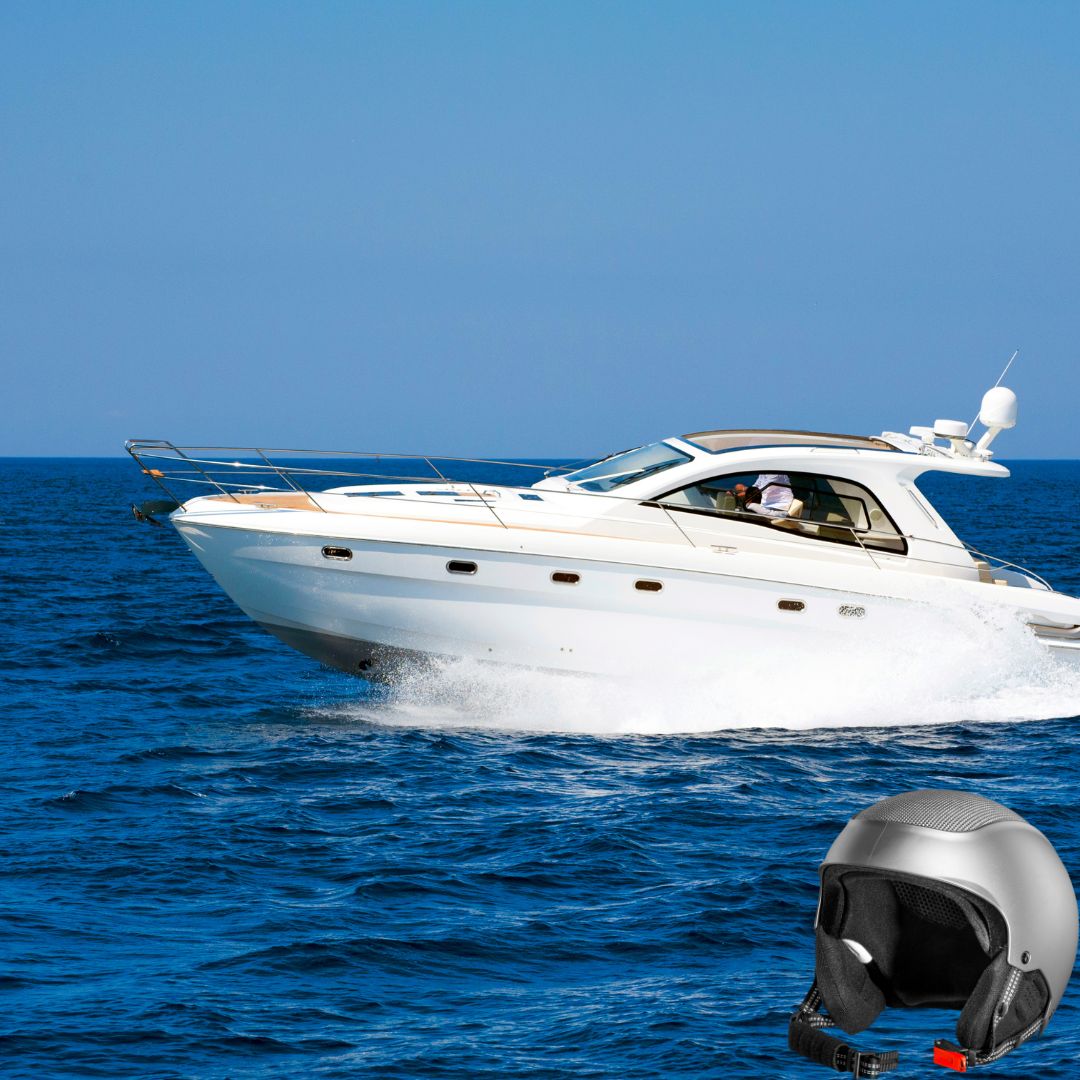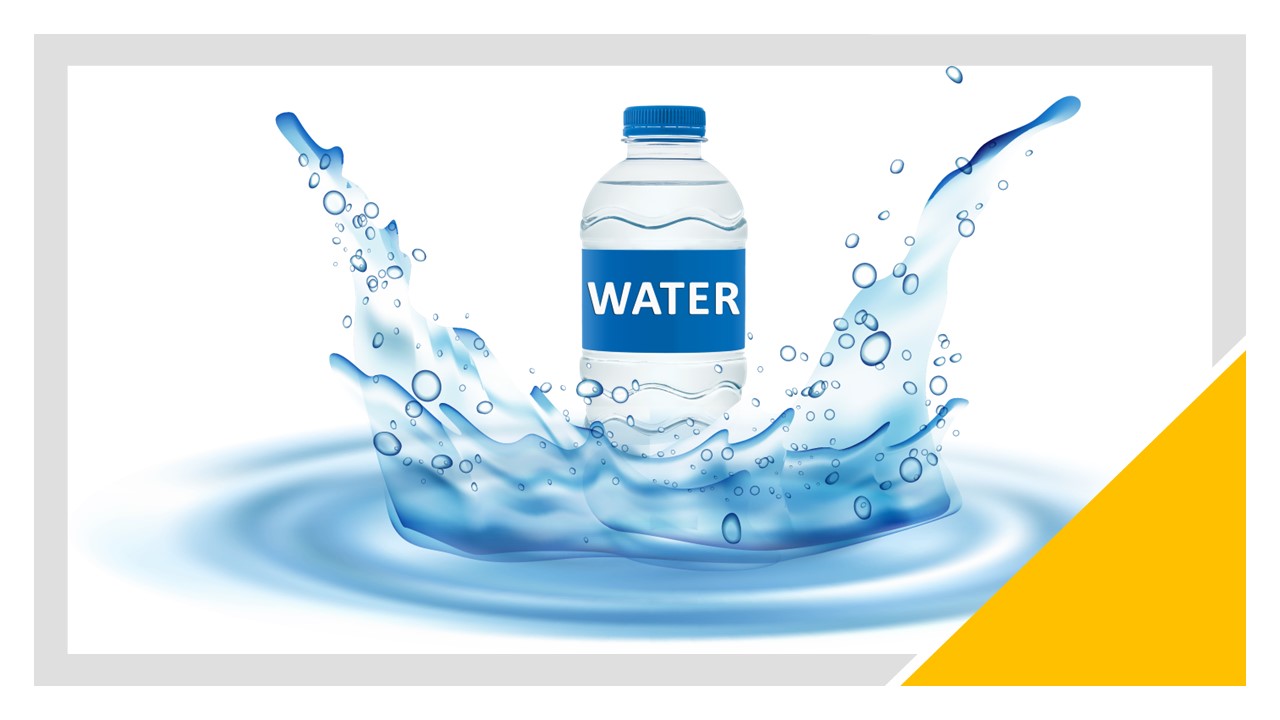Are Water Sports Dangerous – Discover The Thrills And Perils
Are water sports dangerous? It’s a question that echoes through the minds of thrill-seekers and cautious adventurers alike. The truth is, like any exhilarating pursuit, water sports come with their set of risks. Yet, it’s not a simple yes or no answer.
In fact, the dynamic world of water-based activities holds a spectrum of excitement and challenge, where understanding the balance between thrill and precaution is key to ensuring a safe and enjoyable experience.
In this article, we’ll dive into potentially dangerous water sports, risk assessments, safety measures, common injuries, and the importance of personal responsibility. So, buckle up your life jacket and join us on this aquatic journey.
Are Water Sports Dangerous
Yes, the world of water sports comes with its share of excitement and challenge, and it’s natural to wonder: are water sports dangerous? The answer isn’t a simple yes or no. Water sports encompass a broad spectrum of activities, each with its own level of risk.
From the serene laps of swimming to the exhilarating rides on waves while surfing, the dangers associated with water sports are influenced by various factors, including environmental conditions, individual skill levels, and adherence to safety measures.
Understanding the potential risks is crucial for anyone venturing into water-based activities. However, it’s important to note that with proper preparation, training, and adherence to safety guidelines, many water sports can be enjoyed safely.
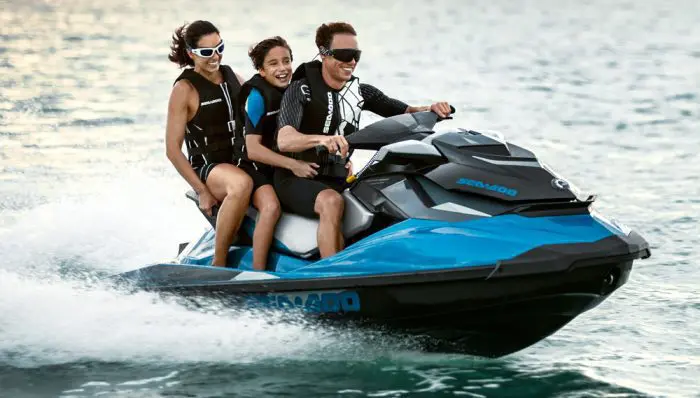
The Different Types Of Water Sports And Their Associated Risks (Are Water Sports Dangerous)
Embark on a journey where the rhythmic strokes of swimming, the daring dance with ocean waves in surfing, and the tranquil glide through waterways in kayaking intertwine to create a tapestry of aquatic adventures.
In this aquatic realm, every water sport carries its unique charm, promising not only exhilaration but also a profound connection with nature. Yet, as we dive into the depths of water sports, we must navigate the currents of risk that flow beneath the surface.
Let’s unravel different water sports, their benefits that beckon with joy, and the challenges that demand respect.
1. Swimming
Swimming is all about propelling yourself through water using your arms and legs. To enhance your swimming, you can wear swimming gloves.
Benefits of Swimming: Improves cardiovascular fitness, builds muscle strength, enhances flexibility, and provides a low-impact full-body workout.
Risks Associated with Swimming: Drowning is a primary concern, along with fatigue, cramps, and overestimating one’s swimming ability.
Navigating Risks: Always swim in designated areas with lifeguards. Ensure basic swimming skills, be aware of water conditions and avoid overexertion.
2. Surfing
Surfing is riding ocean waves on a surfboard, using skill and balance to navigate.
Benefits of Surfing: Enhances core strength, improves balance and coordination, and provides a thrilling cardiovascular workout.
Risks Associated with Surfing: Injuries from wipeouts, collisions with other surfers, or contact with the surfboard. Strong currents and waves can pose additional challenges.
Navigating Risks: Wear protective gear, be aware of surfing conditions, and start with smaller waves. Take lessons to learn proper techniques and etiquette.
3. Kayaking
Kayaking is paddling through water in a small boat, often maneuvering through rivers or calm waters.
Benefits of Kayaking: Builds upper body strength, improves cardiovascular health, and offers a peaceful way to explore waterways and nature.
Risks Associated with Kayaking: Capsizing, hypothermia, and injuries from collisions or entrapment.
Navigating Risks: Wear a life jacket, take kayaking lessons, be mindful of water conditions, and paddle in areas suitable for your skill level.
4. Scuba Diving
Scuba Diving is about exploring underwater environments using a self-contained breathing apparatus (SCUBA).
Benefits of Scuba Diving: Provides a unique opportunity to explore marine life, improves respiratory fitness, and can be a therapeutic and meditative experience.
Risks Associated with Scuba Diving: Decompression sickness, barotrauma, and equipment-related issues.
Navigating Risks: Get certified, follow dive tables, dive with a buddy, regularly maintain equipment, and adhere to safe diving practices.
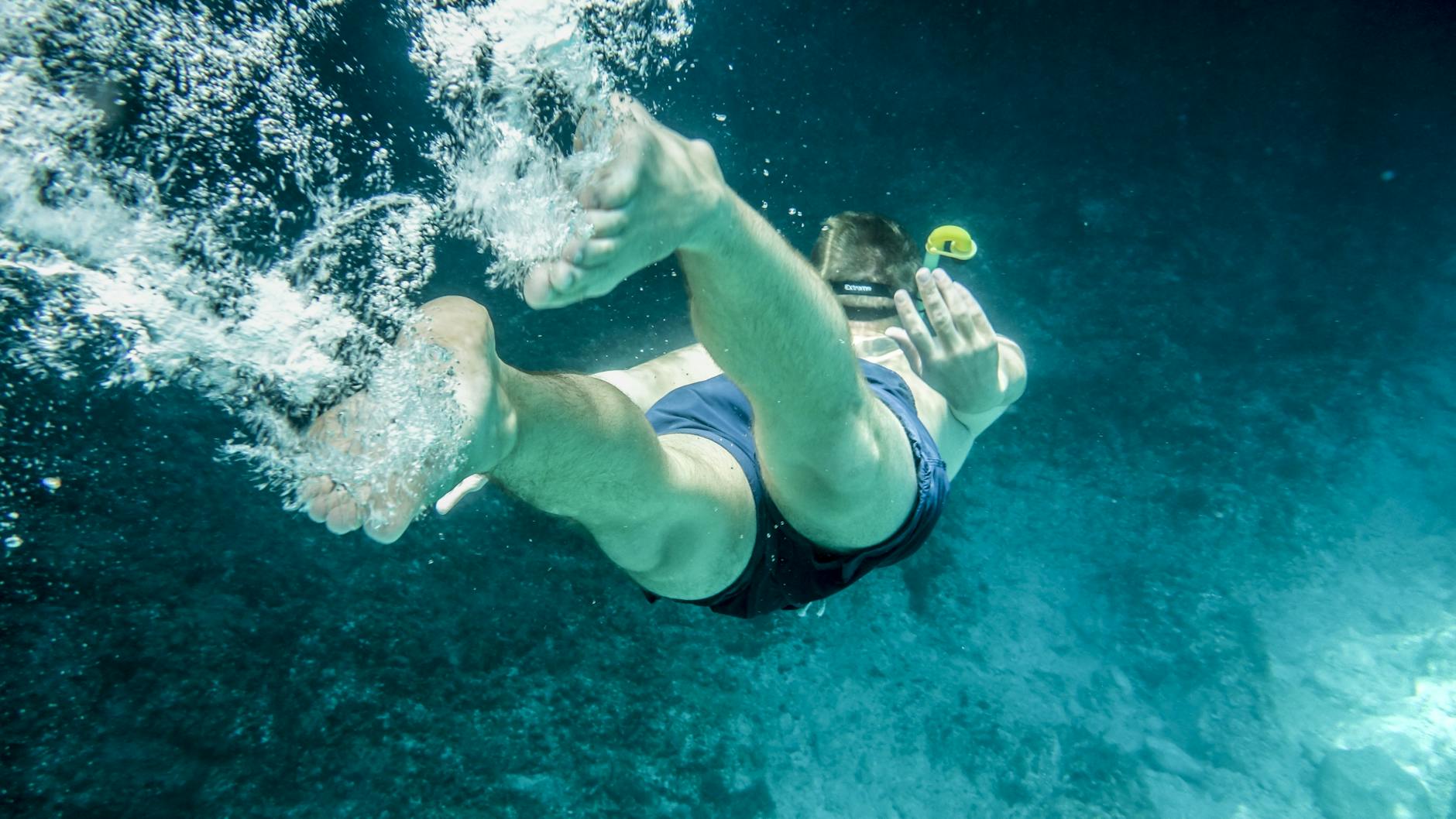
5. Snorkeling
Snorkeling is about swimming near the water’s surface with a snorkel and mask to observe underwater life.
Benefits of Snorkeling: Enhances cardiovascular fitness, improves lung capacity, and allows for a close-up view of marine ecosystems.
Risks Associated with Snorkeling: Drowning, shallow-water blackout, encounters with marine life, and exhaustion.
Navigating Risks: Use quality equipment, stay close to the shore, be aware of your surroundings, and snorkel with a buddy.
6. Water Skiing
Water Skiing is a water sport that requires being pulled behind a boat while standing on water skis.
Benefits of Water Skiing: Strengthens the core, legs, and arms, improves balance, and offers an exhilarating water-based activity.
Risks Associated with Water Skiing: Injuries from falls, collisions, or contact with the towrope. Water skiing in crowded areas increases the risk of accidents.
Navigating Risks: Wear protective gear, receive proper instruction, be aware of surroundings, and communicate with the boat driver.
7. Jet Skiing
Jet Skiing is riding a personal watercraft at high speeds across the water.
Benefits of Jet Skiing: Provides an adrenaline rush, improves reaction time and coordination, and offers an exciting water-based experience.
Risks Associated with Jet Skiing: Collisions with other watercraft, reckless maneuvers, and lack of experience can lead to accidents.
Navigating Risks: Take a safety course, follow speed limits, wear a life jacket, water shoes and be aware of other boaters and water users.
8. Windsurfing
Windsurfing is riding on a board with an attached sail, using the wind for propulsion.
Benefits of Windsurfing: Enhances cardiovascular fitness, improves balance, and requires coordination between body movements and wind conditions.
Risks Associated with Windsurfing: Falls into the water, collisions with the board, and challenges posed by strong winds.
Navigating Risks: Learn proper techniques through lessons, be aware of wind conditions, wear a harness and protective gear, and start in beginner-friendly areas.
9. Parasailing
Parasailing is being towed behind a boat while attached to a parachute-like canopy.
Benefits of Parasailing: Provides a unique aerial perspective, offers an adrenaline-pumping experience, and can be a thrilling water activity.
Risks Associated with Parasailing: Injuries during takeoff or landing, equipment failure, and adverse weather conditions.
Navigating Risks: Choose reputable operators, check equipment thoroughly, be aware of weather conditions, and communicate with the crew.
10. White-Water Rafting
White-Water Rafting is navigating through river rapids in an inflatable raft with a group.
Benefits White-Water Rafting: Builds teamwork and communication skills, enhances cardiovascular fitness, and provides an adrenaline-filled adventure.
Risks Associated with White-Water Rafting: Capsizing, collisions with rocks or other rafts, and entrapment.
Navigating Risks: Choose experienced guides, wear appropriate safety gear, follow instructions carefully, and be physically prepared.
11. Wakeboarding
Wakeboarding is riding a board while being towed behind a boat, often incorporating tricks and jumps.
Benefits of Wakeboarding: Improves balance, strengthens core muscles, and offers a dynamic and challenging water sport.
Risks Associated with Wakeboarding: Injuries from falls, collisions, or contact with the towrope. Skill level and awareness are crucial for safety.
Navigating Risks: Wear protective gear, receive proper instruction, be aware of surroundings, and communicate with the boat driver.
12. Free Diving
Free Diving is breath-holding diving without the use of breathing apparatus.
Benefits of Free Diving: Enhances lung capacity, improves mental discipline and focus, and allows for a close interaction with marine life.
Risks Associated with Free Diving: Shallow-water blackout, hypoxia, and barotrauma.
Navigating Risks: Get proper training, never dive alone, be aware of your limits, and practice safe breath-holding techniques.
13. Underwater Hockey
Underwater Hockey is a team sport played on the bottom of a swimming pool, players use a small stick to push a puck into the opposing team’s goal.
Benefits of Underwater Hockey: Improves endurance, enhances cardiovascular fitness, and promotes teamwork and strategic thinking.
Risks Associated with Underwater Hockey: Potential for collisions with other players, risk of drowning if not played in a controlled environment.
Navigating Risks: Play in designated areas with controlled conditions, use proper equipment, and prioritize communication with teammates.
14. Kite Surfing
Kite Surfing involves riding on a small surfboard while being pulled by a kite, harnessing the wind for propulsion.
Benefits Kite Surfing: Provides an adrenaline rush, improves balance, and combines elements of surfing and kite flying.
Risks Associated with Kite Surfing: Injuries from falls, collisions, and the powerful force of the kite in strong winds.
Navigating Risks: Take lessons from certified instructors, use safety equipment, be aware of weather conditions, and follow proper kite-flying techniques.
15. Dragon Boat Racing
Dragon Boat Racing is a team sport where participants paddle in a long, narrow boat decorated like a dragon.
Benefits of Dragon Boat Racing: Builds upper body strength, enhances cardiovascular fitness, and fosters teamwork and camaraderie.
Risks Associated with Dragon Boat Racing: Capsizing, collisions with other boats, and overexertion.
Navigating Risks: Receive proper training, wear life jackets, follow the commands of a qualified steerer, and be aware of water conditions.
16. Synchronized Swimming
Synchronized swimming is a water-based performance sport where swimmers perform synchronized routines to music.
Benefits Synchronized Swimming: Improves flexibility, enhances cardiovascular fitness, and promotes teamwork, coordination, and artistic expression.
Risks Associated with Synchronized Swimming: Risk of drowning if not performed in controlled conditions, and potential injuries from intricate movements.
Navigating Risks: Practice routines in controlled environments, receive proper training, and prioritize safety during performances.
17. Canoe Polo
Canoe Polo is a team sport where players paddle in canoes and try to score goals with a water polo ball.
Benefits of Canoe Polo: Enhances cardiovascular fitness, builds upper body strength, and promotes teamwork and strategic thinking.
Risks Associated with Canoe Polo: Capsizing, collisions with other players, and injuries from the ball or paddle.
Navigating Risks: Use proper equipment, follow rules and guidelines, and receive proper training in paddling techniques and game strategies.
18. Hydrofoil Surfing
Hydrofoil Surfing is riding a surfboard with a hydrofoil, lifting the board above the water’s surface for a smoother ride.
Benefits of Hydrofoil Surfing: Offers a unique and smooth surfing experience, enhances balance and core strength.
Risks Associated with Hydrofoil Surfing: Injuries from falls, collisions with the hydrofoil, and challenges in controlling the board.
Navigating Risks: Learn proper hydrofoil technique, use safety gear, and start in calm conditions before progressing to more challenging waves.
19. Aqua Zumba
Aqua Zumba is a water-based fitness class that combines traditional Zumba dance moves with water resistance.
Benefits of Aqua Zumba: Improves cardiovascular fitness, enhances muscle strength, and provides a low-impact workout with reduced stress on joints.
Risks Associated with Aqua Zumba: Risk of overexertion if not adapted to individual fitness levels, and potential for slips in the water.
Navigating Risks: Adapt movements to personal fitness levels, stay hydrated, and use non-slip pool shoes.
20. Underwater Photography
Underwater Photography is a scuba-based underwater water sports that involves capturing images or videos while submerged underwater, often in marine environments.
Benefits of Underwater Photography: Fosters a connection with marine life, promotes creativity, and provides a unique perspective on underwater ecosystems.
Risks Associated with Underwater Photography: Drowning if not performed with proper diving equipment, equipment-related issues, and environmental hazards.
Navigating Risks: Get certified in underwater photography, use appropriate diving equipment, and prioritize safety in underwater environments.
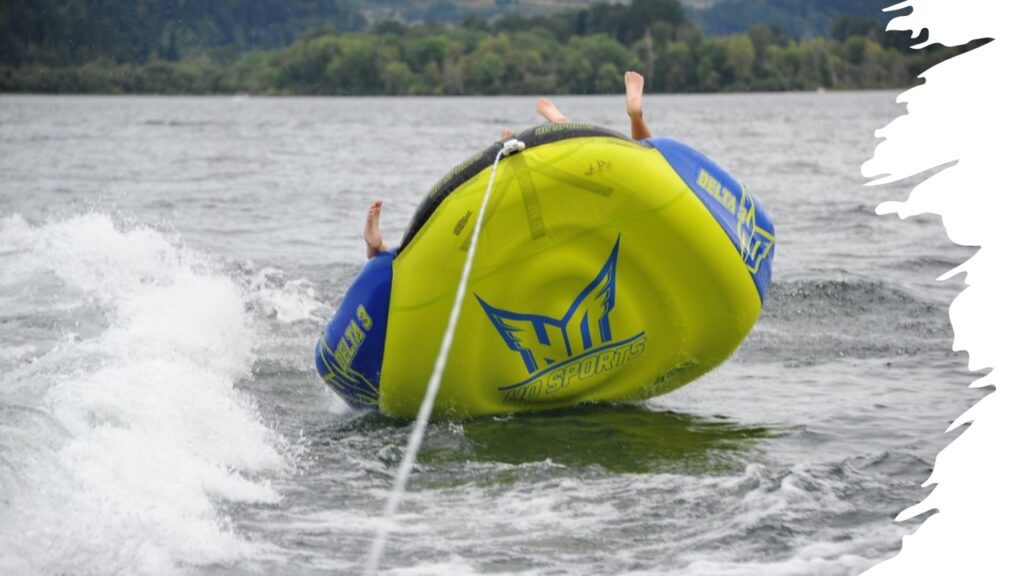
21. Tubing
Tubing involves riding an inflatable tube towed behind a boat. Participants sit or lie on the tube, gripping handles while the boat pulls them through the water.
Benefits of tubing: Provides an exhilarating and fun experience, enhances balance and grip strength, and is accessible for individuals of various skill levels.
Risks Associated with Tubing: Injuries from falls or sudden changes in speed, collisions with the water or other tubers, and the potential for muscle strain.
Navigating Risks: Wear a properly fitted life jacket, water shoes, receive instructions on proper tubing techniques, communicate with the boat driver, and avoid high speeds or sharp turns, especially for beginners. Be aware of the water conditions and the surroundings to minimize the risk of collisions.
Engaging in water sports can be both exhilarating and beneficial, but understanding and managing the associated risks are crucial for a safe and enjoyable experience. Always prioritize safety, receive proper training, use appropriate safety gear, and be aware of your surroundings and limitations.
RELATED: How To Remove Water Spots – A Comprehensive Guide
How To Choose A Water Sport That Is Right For You (Are Water Sports Dangerous)
Choosing the right water sport is a personal decision that depends on your interests, fitness level, comfort in the water, and the type of experience you’re seeking. Here’s a guide to help you make the right choice:
1. Assess Your Comfort Level in Water
If you’re comfortable in the water and enjoy swimming, activities like swimming, snorkeling, or scuba diving might be appealing.
If you’re less confident in the water, you might consider activities like kayaking or paddleboarding, which are generally accessible to beginners.
2. Consider Your Fitness Level
Water sports can provide varying levels of physical exertion. High-intensity sports like surfing, kiteboarding, or white-water rafting require good physical fitness and stamina.
If you prefer a more relaxed experience, activities like canoeing, tubing, or sailing can be enjoyable without the need for intense physical exertion.
3. Define Your Thrill Tolerance
Some water sports, like surfing, wakeboarding, or jet skiing, offer an adrenaline rush and a sense of adventure.
If you prefer a calmer experience, activities such as paddleboarding, fishing, or sailing might be more suitable.
4. Consider Your Location
The availability of water bodies in your area may influence your choice. If you live near the coast, surfing, snorkeling, or paddleboarding might be accessible. If you’re close to lakes or rivers, kayaking, canoeing, or fishing could be convenient.
5. Explore Your Interests
Different water sports cater to diverse interests. If you enjoy observing marine life, snorkeling or scuba diving may be ideal. If you love speed and waves, consider activities like jet skiing or wakeboarding.
If you’re drawn to team sports, dragon boat racing or synchronized swimming might be worth exploring.
6. Consider the Season and Weather
Some water sports are seasonal and depend on weather conditions. Winter might be suitable for activities like skiing or snowboarding, while summer is ideal for surfing, swimming, or kayaking.
7. Factor in the Learning Curve
Some water sports, like tubing or paddleboarding, have a relatively short learning curve and are beginner-friendly. Others, such as windsurfing or kiteboarding, may require more time and effort to master.
8. Think About Social Preferences
Consider whether you prefer solo activities or group experiences. Team sports like dragon boat racing or water polo offer a social dynamic, while activities like kayaking or snorkeling can be enjoyed individually or with a partner.
9. Budget and Accessibility
Some water sports may require specific equipment or lessons, which can impact your budget. Consider the accessibility of equipment and training facilities in your area.
10. Test the Waters
Before committing to a particular water sport, try a few different ones to see which resonates with you. Many locations offer rental services or introductory lessons.
Ultimately, the right water sport is the one that aligns with your preferences, fits your comfort level, and brings you joy. Whether you’re seeking a tranquil experience or an adrenaline-fueled adventure, the world of water sports has something for everyone.
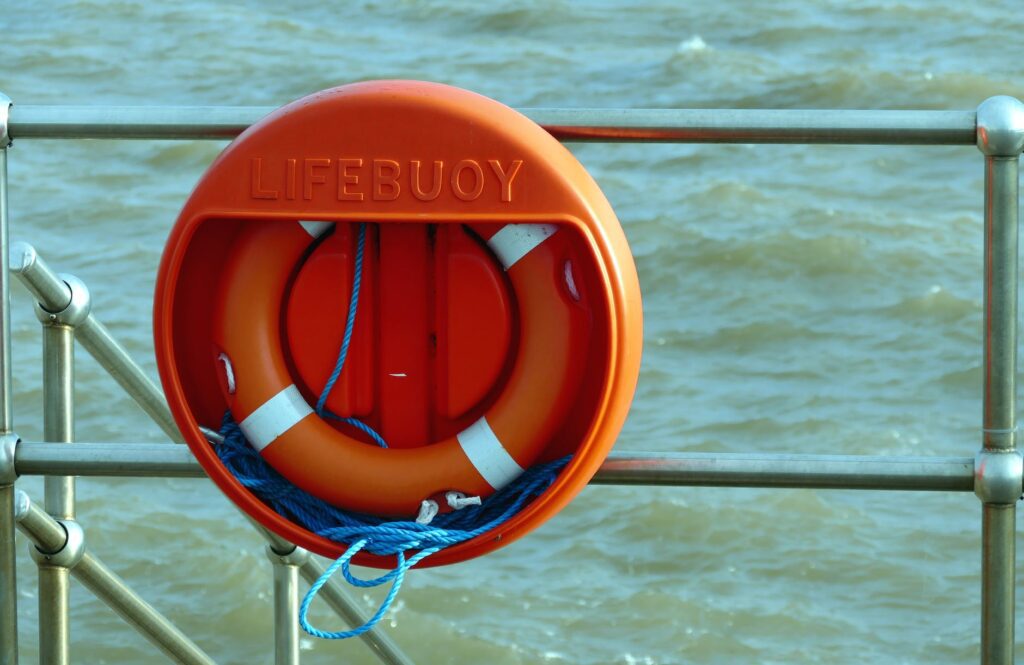
Water Sports Common Injuries And Accidents (Are Water Sports Dangerous)
In the aquatic playground of water sports, the thrill of the waves is met with the responsibility of understanding and mitigating common injuries and accidents. From the serene lap of a swimming pool to the turbulent rush of white-water rapids, water-based activities come with their share of risks.
1. Drowning
One of the most severe risks, drowning can occur due to exhaustion, inability to swim, or unexpected incidents like getting trapped underwater.
Prevention: Always swim in designated areas with lifeguards, wear life jackets when necessary, and ensure basic swimming skills.
2. Impact Injuries
Collisions with other participants, watercraft, or underwater obstacles can result in bruises, fractures, or more severe injuries.
Prevention: Be aware of surroundings, follow proper navigation rules, and wear protective gear such as helmets or padding when applicable.
3. Sprains and Strains
Overexertion or improper techniques can lead to muscle sprains, strains, or joint injuries.
Prevention: Warm-up before activities, maintain proper form, and gradually increase intensity to avoid overexertion.
4. Diving Injuries
Head and spinal injuries can occur from improper diving techniques or misjudging water depth.
Prevention: Always enter the water feet-first in unfamiliar areas, adhere to diving guidelines, and avoid diving in shallow or murky waters.
5. Equipment-Related Accidents
Malfunctions or improper use of equipment such as snorkeling gear, scuba diving apparatus, or watercraft can lead to accidents.
Prevention: Regularly inspect and maintain equipment, seek professional guidance for unfamiliar gear, and follow manufacturer instructions.
Statistics and Case Studies
According to the World Health Organization (WHO), drowning is the third leading cause of unintentional injury death globally, with over 320,000 annual fatalities.
Case studies from popular surfing destinations reveal a notable increase in head and spine injuries among surfers, emphasizing the importance of proper wave-riding techniques and awareness of the ocean floor.
Preventive Measures
- Strict adherence to safety guidelines and regulations for each water sport.
- Comprehensive training programs for participants to enhance their skills and awareness.
- Use of safety equipment such as life jackets, helmets, and protective padding.
- Establish and maintain proper signage and warnings in areas prone to accidents.
- Conduct regular safety briefings and educate participants on the specific risks associated with each water activity.
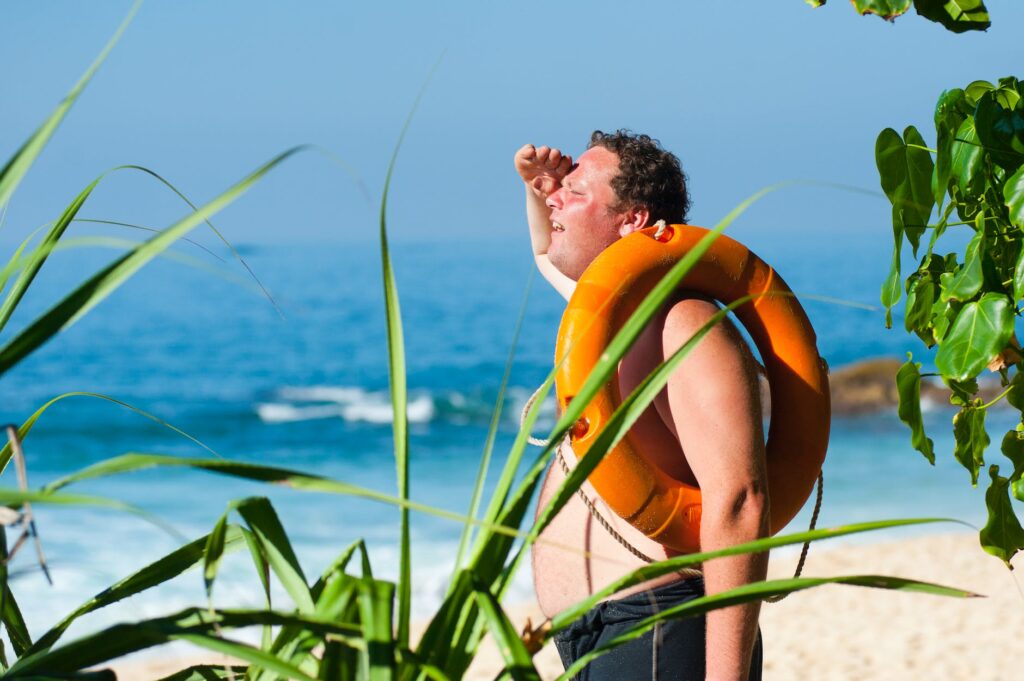
Safety Precautions To Take When Participating In Water Sports (Are Water Sports Dangerous)
Participating in water sports can be immensely enjoyable, but safety should always be a top priority. Here are essential safety precautions to take when engaging in water sports:
1. Wear a Life Jacket: Regardless of your swimming ability, wearing a properly fitted life jacket is crucial. It provides buoyancy and can be a lifesaver in emergencies.
2. Undergo Proper Training: Before attempting any water sport, ensure you have received proper training from certified instructors. Learn the fundamental techniques, safety procedures, and how to use equipment correctly.
3. Use Appropriate Safety Gear: Depending on the water sport, wear appropriate safety gear such as helmets, goggles, gloves, or wetsuits. The right gear can provide protection against potential injuries.
4. Know Your Limits: Be honest about your skill level and physical fitness. Avoid taking unnecessary risks, and do not attempt activities beyond your capabilities. Progress gradually as you gain experience.
5. Be Weather-Aware: Check weather conditions before heading out. Avoid water activities during storms, high winds, or other adverse weather conditions. Sudden changes in weather can pose serious risks.
6. Stay Hydrated: Even when surrounded by water, it’s crucial to stay hydrated, especially in warm climates. Dehydration can impair judgment and physical performance.
7. Buddy System: Whenever possible, participate in water sports with a buddy. This is particularly important for activities like scuba diving, snorkeling, or open-water swimming.
8. Know the Environment: Familiarize yourself with the water body you’ll be in, including potential hazards such as rocks, strong currents, or marine life. Observe warning signs and adhere to local regulations.
9. Check Equipment Regularly: Before each session, inspect your equipment for any damage or malfunction. This includes checking the condition of life jackets, paddles, diving gear, or any other gear relevant to the activity.
10. Be Sun-Smart: Use sunscreen with a high SPF to protect your skin from the sun’s harmful rays, especially if you’ll be on or near the water for an extended period.
11. Learn and Practice Rescue Techniques: Familiarize yourself with basic water rescue techniques. Knowing how to assist someone in distress and calling for help when needed is crucial for water safety.
12. Follow Boating Rules: If your water sport involves boating, adhere to boating regulations, including speed limits and navigation rules. Assign a designated driver if necessary.
13. Emergency Preparedness: Know the location of emergency services, have a plan for evacuation if needed, and carry communication devices such as a waterproof phone case or marine radio.
14. Be Mindful of Marine Life: Respect marine life and avoid disturbing or provoking animals. Familiarize yourself with the potential presence of dangerous species in the area.
15. Stay Calm in Emergencies: In case of an emergency, try to remain calm. Panic can worsen situations. Signal for help, and if necessary, use rescue techniques learned during training.

What To Do In An Emergency (Are Water Sports Dangerous)
In an emergency situation during water sports, quick and appropriate actions can make a significant difference in ensuring safety. Here’s a general guide on what to do in various emergency scenarios:
Drowning Or Near-Drowning
- Yell for help and alert others around you.
- If you are a capable swimmer and it’s safe to do so, approach the person in distress from behind to avoid being grabbed.
- Use a reaching pole, lifebuoy, or any available flotation device to extend to the person.
- Call emergency services immediately.
Injury Or Accident
- Assess the situation for potential dangers before approaching.
- Provide first aid if you are trained to do so.
- If the injury is severe or if there’s any doubt, call emergency services.
- Evacuate the person to a safe location if possible.
Boating Accidents
- If someone falls overboard, stop the boat and throw a floating object to the person.
- If the boat capsizes, stay with the boat and use it for support.
- Call for help using a marine radio or a waterproof phone case.
Capsizing Or Sinking
- Stay calm and hold on to the boat or any available floating object.
- Signal for help by waving your arms or using a whistle.
- If you have a life jacket, put it on and secure yourself to the boat.
Lost Or Disoriented
- Stay calm and try to retrace your steps or find recognizable landmarks.
- Use any navigational tools you have, such as a compass or GPS device.
- If possible, call for help and provide your location.
Marine Life Encounter
- Remain as calm as possible to avoid agitating the animal.
- Slowly and steadily move away from the animal without making sudden movements.
- If you are stung or bitten, seek medical attention immediately.
Equipment Malfunction
- If your equipment malfunctions, try to troubleshoot the issue if it’s safe to do so.
- If the problem persists or if it compromises safety, signal for help.
- Use any backup equipment you may have if applicable.
Storm or Adverse Weather
- Seek shelter if possible.
- If you are on a boat, head to the nearest shore or a protected area.
- Monitor weather forecasts before engaging in water sports and be prepared to cut short your activity if conditions deteriorate.
Fire Onboard
- Use any available firefighting equipment, such as a fire extinguisher, to control the fire.
- Evacuate the boat if the fire is uncontrollable.
- Call emergency services immediately and provide your location.
Assist Others
- If you witness someone in distress, call for help immediately.
- Use any available flotation devices or throw a buoyant object to the person.
- If you are trained and it’s safe to do so, provide assistance without putting yourself at risk.
Always prioritize your safety and the safety of others in emergency situations. Being prepared, staying calm, and taking swift and appropriate actions can significantly improve the outcome in challenging circumstances during water sports.
The Bottom Line On Are Water Sports Dangerous
In answering the question “Are water sports dangerous?” the key lies not in avoiding the thrill but in embracing it with respect and preparation. Every wave, every current, and every splash hold the promise of exhilaration, but understanding the risks ensures a journey filled with joy, not peril.
So, embark on your aquatic adventures armed with knowledge, proper training, and a profound respect for the water. In the realm of water sports, the blend of excitement and safety creates an experience that’s as thrilling as it is secure — a perfect union for enthusiasts seeking the perfect balance between daring exploits and safeguarded enjoyment.


